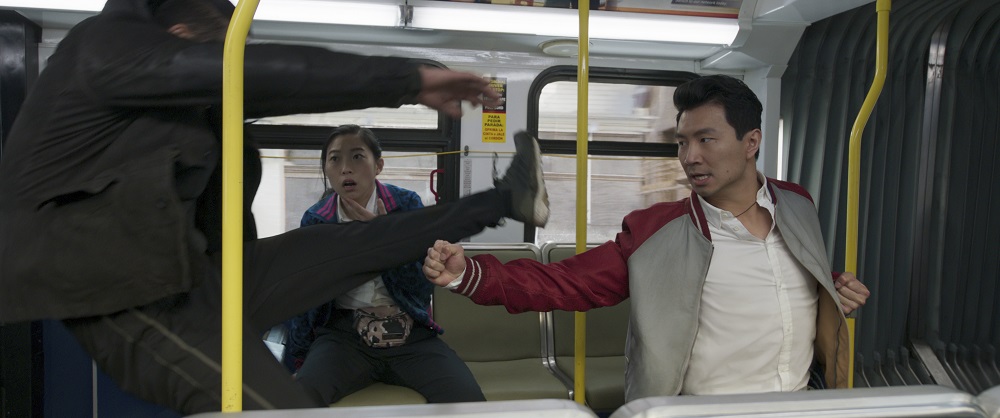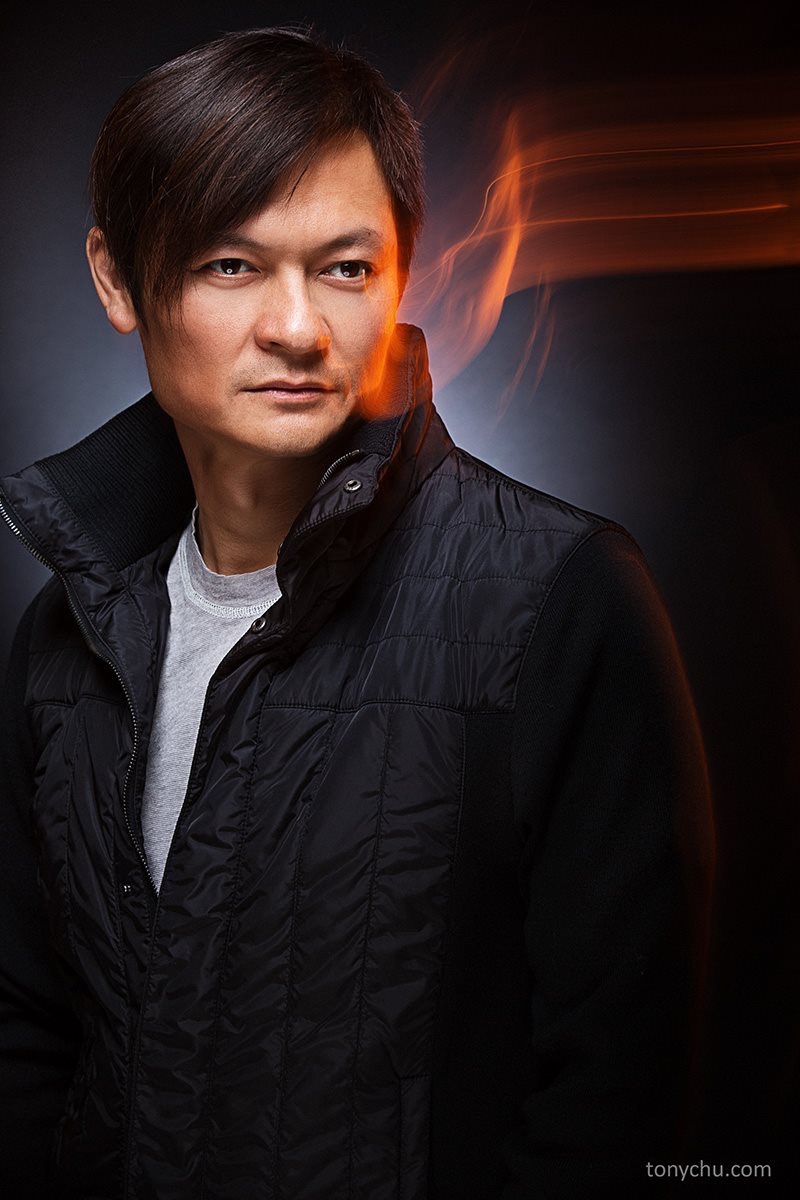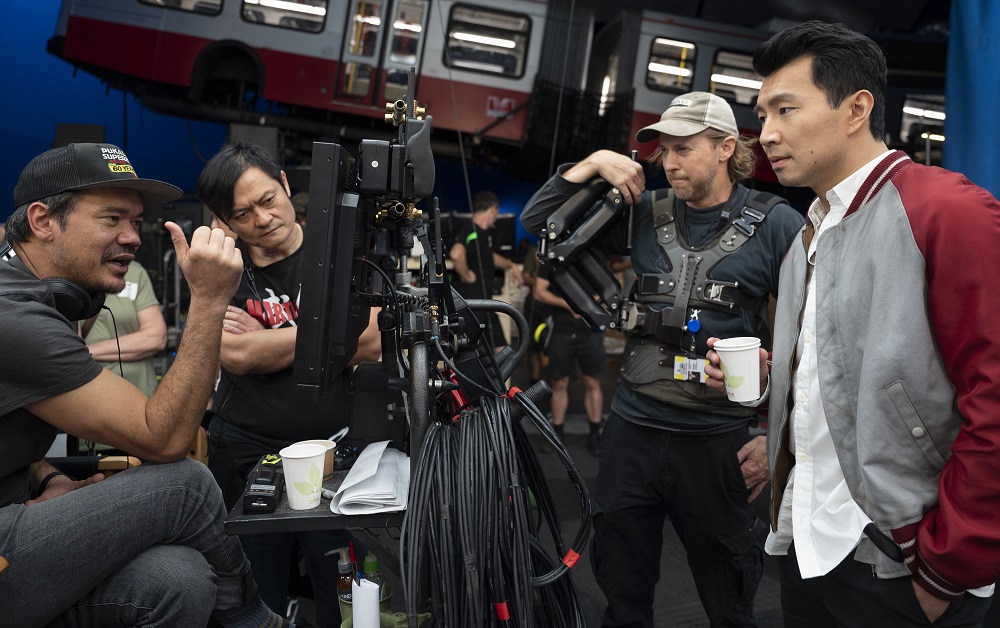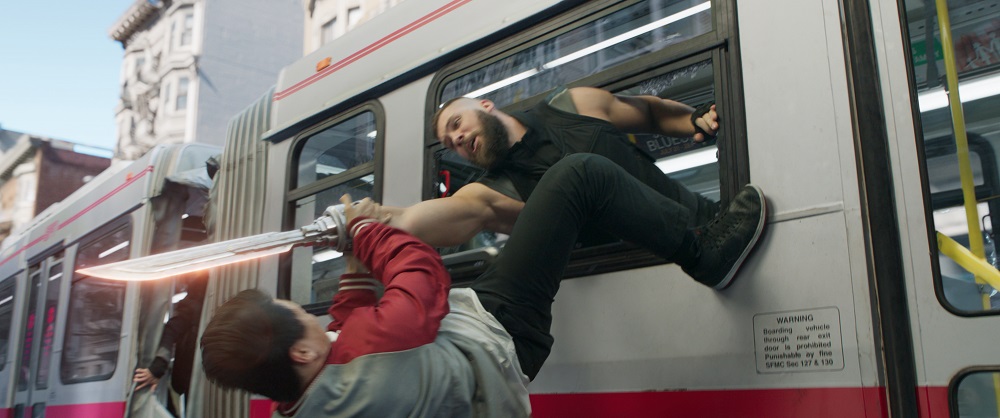
Currently, the highest domestic earner of the year, Marvel Studios’ Shang-Chi and the Legend of the Ten Rings is now available on Digital and 4K/Blu-ray. The studio provided Below the Line with the chance to speak with the film’s fight coordinator Andy Cheng, whose work as a prominent member of the Jackie Chan Stunt Team propelled him into a big career in Hollywood behind-the-scenes on such films as Rush Hour, Looper, Twilight, 6 Underground and the recent TV series Into the Badlands.
During our 1:1 interview, he discussed the challenges of the movie’s standout bus fight sequence, as well as memories of working as a second unit director on Terrence Malick’s The New World.

Below the Line: You’ve had a long career as a fight coordinator since the late ’90s. How did you get roped into your first Marvel movie?
Andy Cheng: I did the interview with them to do all the action. My little brother on the Jackie Chan stunt team, Brad Allan – the Second Unit Director on the show, who just passed away – was the one calling me and saying you’re going to do Shang-Chi, because Shang-Chi had all the Chinese continent, Chinese culture and that kind of stuff. Also, Shang-Chi is based on Bruce Lee, so all that stuff is very tied into my background, where I’m from. Everything about kicking and the Jackie Chan style all together, but I got into it because of my little brother.
BTL: And you specifically focused on the bus sequence, right?
Cheng: That sequence and then the cage fight, the first time the brother/sister meet. And then for the end, I did a bunch of different stuff like training and the final battle involved in everything, but mostly, mainly the bus scene and the cage fight. And the opening fight with Wong and the monster.
BTL: Oh yeah, with Abomination!
Cheng: Yeah, Abomination I did that sequence too. The whole scene when he walks into the fight pit, all the rooms. Everything from when they walk in and they say, “Oh, you go up there to fight!” That whole sequence.
BTL: This relates to both of those sequences, but Marvel famously uses a lot of pre-viz from companies like The Third Floor for set pieces, sometimes even before the director comes on board. How much of these sequences were pre-vized before you came on?
Cheng: The cage fight for sure no, we started from scratch. The bus fight we had the idea and then we had some storyboards. I think the big storyboard did have a lot of pages from Destin [Daniel Cretton], and then the creative process we started from the very first fight scene, the bus fight scene in Los Angeles. So they put up the bus and I started trying to see how to start the attack. We did many many many versions of it, and I got a good idea of how to get out of the bus through the window. The Third Floor gave us some options of how to get up there with the animation because we cannot move the bus, right? So how do you turn the bus? How do you flip up there? We had a different version with a jump-off to the sidewalk and coming back onto the bus. This was after I had laid out the whole sequence, the structure, and then the ending where he dove off before the bus was in two pieces. An early version had him saving a kid, holding a kid and diving, but then we took the kid out so he was just diving, but that was all decided by me and Brad. We went through the whole thing, and then The Third Floor jumped into it. The animation was more for the dog creature, the dragon, all the special things for the whole ending sequence, the battle sequence, those had a lot of animation and then we plug into the action. For the Dragon and other monsters fighting, we cannot create that, so that’s all from them, but the bus scene and then the cage fight, we started those first.

BTL: So you got in on the ground floor instead of the Third Floor. How much prep time did you have for both of these two sequences?
Cheng: Oh that’s a long time. The first thing was the bus sequence, and then at the end of shooting the second unit was still doing the bus sequence, so that was over one year. We had three months off because of the pandemic, so we went to Sydney and then we shut down and then we get to LA about three months later and we finished the movie. From the day when I started working on the rehearsals and the pre-viz for the bus scene to the end totals one year.
BTL: This is the 25th movie in a very long series, and they’ve been doing big fight scenes for a long time. How important was it for you to make these fights unique and different from what came before by bringing that martial arts legacy into it?
Cheng: With choreography or action directing, our people always want to do something new. It doesn’t matter how long the sequence is or even just one punch, you want the punches to look different than others. So from the very beginning, when me and my brother were talking about this whole sequence, we already knew at the end people will say, “Oh this is like Jackie Chan stuff,” but we try to avoid it. We had fun with Jackie Chan. We learned from the master, but we want to make sure Shang-Chi has his own style. I have the whole Shang-Chi collection, 114 magazines. I know the idea was Bruce Lee, so when we start to design the kicking I know Marvel doesn’t have a superhero based on the kicking. They have shields, they have hammers…
BTL: Elbows.
Cheng: Yeah! They did the wire things, but not really someone good at kicking. Simu Liu had a really good background. He learned taekwondo. He can do kicking. So we wanted to base it on that and make it more outstanding. That’s why on the bus you see all the kicking because he can do it. We tried to create the Shang-Chi style. It leans into the kicking like Bruce Lee, and then when he plays with the laptop and is dodging around it feels like Jackie. So those were really combined in theory together, you know? That’s the whole concept. We don’t want to do one style. We want it to be like no style is a style. That’s the philosophy. We wanted to test Shang-Chi so he can do everything, he doesn’t pin it all on Judo or taekwondo. We want to put everything into it. Very rich, very different than other superheroes.
BTL: You have the whole original comics run. Were there any specific panels or drawings that you wanted to recreate during the fights?
Cheng: Not really, no. I remember when I saw Florian [Munteanu] as Razor Fist, I don’t have a plan to abide by but I remember when they said he had only one arm, in the comics, it’s two. They tried to create something interesting, to introduce Razor Fist, and I can see the intent of doing that. They really opened my eyes. It doesn’t have to go back to the original. Also, we tried to update that from 1970. We didn’t try to recreate panels. We wanted it to be original. So we tried to base it on knowing the character, knowing his background as the Master of Kung Fu, so we know he can do anything. There’s no limit. We had to create something more organic and original. So that’s how we started.

BTL: Speaking of a Razor Fist, what are the challenges of staging a fight with prominent CG elements like Razor Fist’s literal razor fist?
Cheng: There’s some challenges, for sure. The first thing is Florian is really big, you know. He’s a big guy. He was almost touching the ceiling, [and] then when he walks in the aisle, it’s very narrow with all those little handrail poles. So he can just crash without even swinging the arm. Then we had to put the CG arm on him, and then we have to have the reference which is a plastic stick with the green thing so we know the distance of the blade. His background is in boxing, but in this [he] is more like a weapon, and then also the narrow area and then have all the passengers. It’s really tiny space, and we also put the camera inside. So it’s really crowded in a very narrow place to do to fight with this big guy.
BTL: In this confined space, there’s all these obstacles. There’s the handrails and the doors and the passengers. How do you keep everything safe including the actors, the extras and the crew?
Cheng: Also, the bus had to move even though we are not doing practical driving. The bus is on a gimbal. We created two different buses. One is one meter high to do the normal driving with a little bouncing, and then we created one like almost five meters high to do all the roller coaster and tipping. Sometimes they tipped the bus very fast so the passengers needed the safety harnesses because you can go out the window. There’s a lot of rehearsal involved with pacing and continuity, and also how the bus feels for the people on it. Luckily, it’s a big production. Marvel gave us a really good schedule. They have really good preparation and gave us the time to make sure everything’s safe.
BTL: I was really surprised to see that you were a second unit director on Terrence Malick’s The New World. That’s one of my favorite movies. Obviously, there’s no martial arts, but there are several battle sequences.
Cheng: I wrote all the battle sequences with the Indians. Terrence Malick is a legendary director and, yeah, I’m surprised I got the job. My agent told me this is a really good director, and I start researching and find out wow, this is an Oscar director. All his work is like a masterpiece, and it’s only his fifth movie in thirty years. After that, he started directing even closer, but in that moment my agent said you have to work for him. Don’t worry about the money. When I went to the interview, I remember me and him went to an Italian restaurant, very small, and then we talked and I had researched how the Indians killed the English and scalping their heads. Terrence said, “Andy this is all very good. I like it.” His one request is don’t shoot under the sunlight. You don’t want the hot sun on their face. When the sun comes out, you guys can sleep, no shooting. They only can shoot overcast. We didn’t do pre-viz. We rehearsed it and then he’d say, “Go shoot it.” He gave me a lot of freedom. When they cast Pocahontas and John Smith, Colin had never met Pocahontas, didn’t even know who it was. Holding the hand-held camera with John Smith walking into the field and trying to find food, and then he finds her. That’s the first time they ever met, both actors. Just for that first reaction.
Shang-Chi and the Legend of the Ten Rings is now available on Digital and 4K/Blu-ray, as well as on Disney+. All pictures courtesy Marvel Studios/Walt Disney Pictures.





